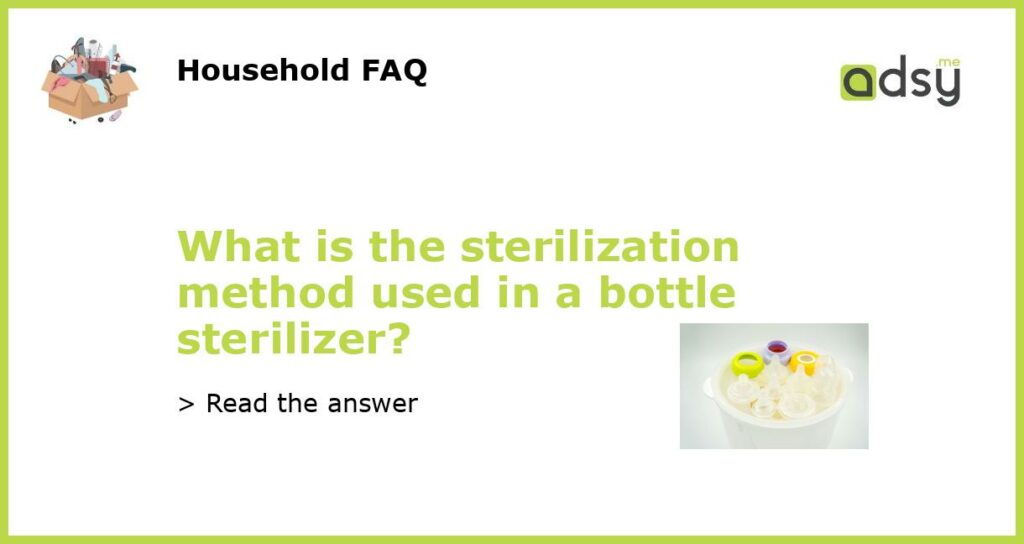Understanding the Sterilization Method in Bottle Sterilizers
Bottle sterilizers have become a popular choice for parents who want to keep their baby’s feeding essentials clean and safe. These devices use a sterilization method that eliminates harmful bacteria, viruses, and other microbes that can cause illness or infections.
If you’re a new parent or a caregiver, it’s important to know how bottle sterilizers work and what sterilization method they use. In this article, we’ll discuss the sterilization method commonly used in bottle sterilizers and how it helps keep your baby’s feeding items clean and safe to use.
The Sterilization Method Used in Bottle Sterilizers
The sterilization method commonly used in bottle sterilizers is heat. These devices use high temperatures to kill harmful microorganisms that may be present on the surface of baby bottles, nipples, pacifiers, and other feeding items.
The heat method used in bottle sterilizers is often referred to as steam sterilization. This process involves heating water to produce steam, which is then used to sterilize the items. Most bottle sterilizers have a heating element that produces steam, and the items to be sterilized are placed inside the device.
The steam produced by the bottle sterilizer heats the items to a high temperature, usually around 212 degrees Fahrenheit. This temperature is high enough to kill most bacteria, viruses, and other harmful microorganisms. Most bottle sterilizers have a timer that allows you to set the sterilization time, which usually ranges from 10 to 15 minutes.
The Benefits of Using a Bottle Sterilizer
Using a bottle sterilizer offers several benefits over traditional methods of sterilizing baby feeding items. The primary benefit of using a bottle sterilizer is that it’s a convenient and easy way to ensure that your baby’s feeding items are clean and sterile.
Traditional methods of sterilizing, such as boiling water or using chemical solutions, can be time-consuming and complicated. With a bottle sterilizer, you simply need to load the items and set the timer, and the device will do the rest.
Bottle sterilization is also more effective than traditional sterilization methods. Steam sterilization has been shown to kill more bacteria and other microorganisms than other methods, making it a superior choice for keeping your baby’s feeding items safe.
Caring for Your Bottle Sterilizer
To ensure that your bottle sterilizer continues to work properly, it’s important to keep it clean and well-maintained. After each use, allow the sterilizer to cool down, then empty any remaining water from the reservoir. You should also wipe down the interior of the sterilizer with a soft cloth to remove any residue or debris.
It’s also important to descale your bottle sterilizer periodically, especially if you have hard water. Over time, mineral buildup can clog the heating element, reducing the effectiveness of the sterilizer. To descale your sterilizer, simply fill it with a descaling solution and run a sterilization cycle.
Choosing the Right Sterilization Method for Your Baby’s Feeding Items
Bottle sterilizers offer a convenient and effective way to keep your baby’s feeding items clean and safe. By using high temperatures and steam sterilization, these devices are able to kill harmful bacteria and other microorganisms that can cause illness or infections.
When choosing a bottle sterilizer, look for one that is easy to use and maintain. You should also consider the size of the sterilizer, as well as its capacity and features. With proper care and maintenance, your bottle sterilizer can provide years of safe and reliable use for your baby’s feeding essentials.






